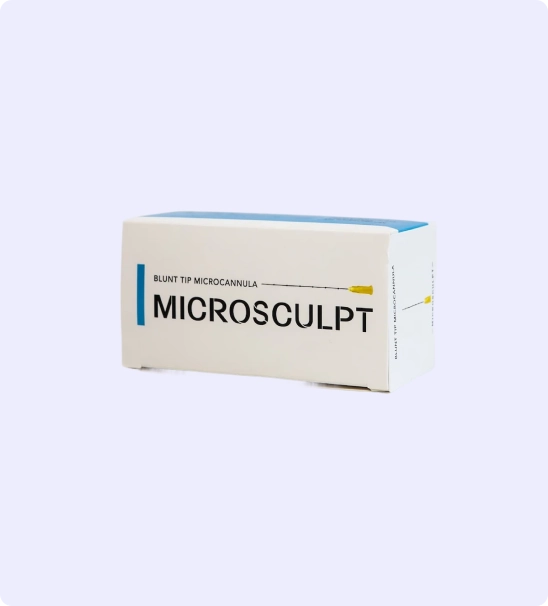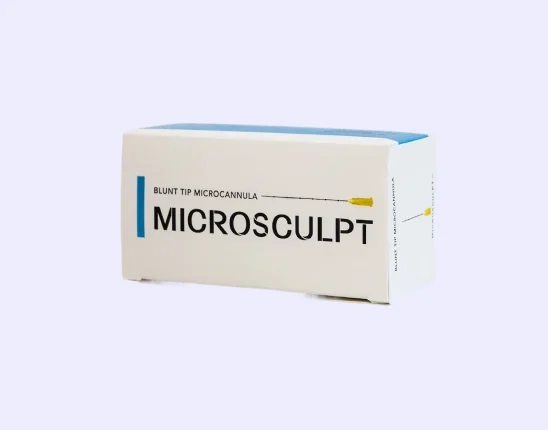Why Do Physicians love Microcannulas?
Simply put? The clinical benefits. Benefits from blunt microcannulas include elimination or near elimination of the risks of accidental intravascular injection. An intravascular injection is an injury to vital neurovascular structures within the areas of injection. Many researchers agree that a blunt microcannula of 27 gauge or above is unlikely to puncture blood vessels or nerves if it is used with proper technique. A Microcannula will push tissue aside as it traverses the path of least resistance through the tissue. So what other benefits do Microcannulas have?

INJECTIONS YOUR PATIENTS WILL LOVE! CODE “20OFF” TAKES 20% OFF YOUR FIRST ORDER!
Microcannulas are a tool that every great injector must master. Patients want quick results with no downtime. Our microcannulas are high quality and a fraction of the price of our competitors!
You can create an account here.
Vascular Compression
Technique matters for avoiding vascular compression, but blunt tips make the chances of it happen far less likely. To prevent excessive extrusion force when injecting fillers through blunt microcannulas that are invariably longer than the typical 13 mm to 19 mm sharp needles, a larger gauge is selected.
In general, a microcannula of 27-gauge or larger diameter is used in place of a 30-gauge sharp needle, and a microcannula of 25 gauge or larger diameter in place of a 27-gauge sharp needle. The decreased extrusion force facilitates the increased flow of filler products that can cause the deposition of inappropriately large filler boluses if the injector is unused to the small volume micro-threading technique that is best suited to microcannulas.
Ecchymosis
The decreased or eliminated the risk of piercing a blood vessel with an appropriately used blunt microcannula compared to sharp needles results in a significantly reduced risk of ecchymosis, which may be particularly noted in regions such as the nasojugal fold, the upper eyelid, and the pre-jowl sulcus. In the researcher’s experience, ecchymosis with blunt microcannulas is minimal and, for many patients, nonexistent.
If ecchymosis does occur, it may be at the insertion site of the sharp pilot needle, or in areas of increased tissue resistance if the microcannula is applied with inappropriate force. Increased tissue resistance may be due to fibrosis, in patients who have previously had face-lifting surgery or multiple injection sessions with collagen-stimulating volumizers such as PLLA. These situations may be considered relative contraindications to the use of blunt microcannulas.
Tolerability
According to researchers, the tolerability of blunt microcannulas is equal to or greater than that of sharp needles. Patient discomfort is reduced to the level where topical anesthesia alone consistently suffices even for injection of the lips, and local nerve blocks are not necessary. There may be some discomfort during the injection, especially if a microcannula is passed multiple times through a zone of tissue fibrosis. Some patients dislike the noise of a blunt microcannula passing through tissue, and we recommend forewarning patients of this and playing music to provide auditory distraction during the injection procedure.
Collagenesis
It has been suggested that the back-and-forth passage of a blunt microcannula multiple times through an area may stimulate collagenesis. This theory is persuasive by extrapolation from the collagenesis observed with repeated back-and-forth passage of cannulas during liposculpture. However, the researchers note that collagenesis induced by liposculpture typically results from a much larger number of “tunneling” passes through the tissue than would be performed when injecting alloplastic fillers with microcannulas.
If you’re a doctor who wants to purchase microcannulas, then stop by FACEMed’s Store for all our available microcannulas. We carry multiple sizes to suit whatever your needs are.
Regardless of what the Doctor is using the utmost care should always be taken to ensure safety for the patient.
Looking for something else? Shop our selection of other products such as our non-invasive and real-time Pulse Oximeter and Heart Rate Monitor today!
-
 23 gauge 50 mm (2 inch) Microcannulas
23 gauge 50 mm (2 inch) Microcannulas -
 22 Gauge 100 mm (4 inch) Microcannulas.
22 Gauge 100 mm (4 inch) Microcannulas. -
 27 Gauge 38 mm (1.5 inch) Microcannulas
27 Gauge 38 mm (1.5 inch) Microcannulas -
 25 Gauge 38 mm (1.5 inch) Microcannulas
25 Gauge 38 mm (1.5 inch) Microcannulas -
 30 Gauge 25 mm (1 inch) Microcannulas
30 Gauge 25 mm (1 inch) Microcannulas -
 18 Gauge 100 mm (4 inch) Microcannulas
18 Gauge 100 mm (4 inch) Microcannulas -
 25 Gauge 50 mm (2 inch) Microcannulas
25 Gauge 50 mm (2 inch) Microcannulas -
 21 Gauge 50 mm (2 inch) Microcannulas
21 Gauge 50 mm (2 inch) Microcannulas -
 21 Gauge 70 mm (2.75 inch) Microcannulas
21 Gauge 70 mm (2.75 inch) Microcannulas







